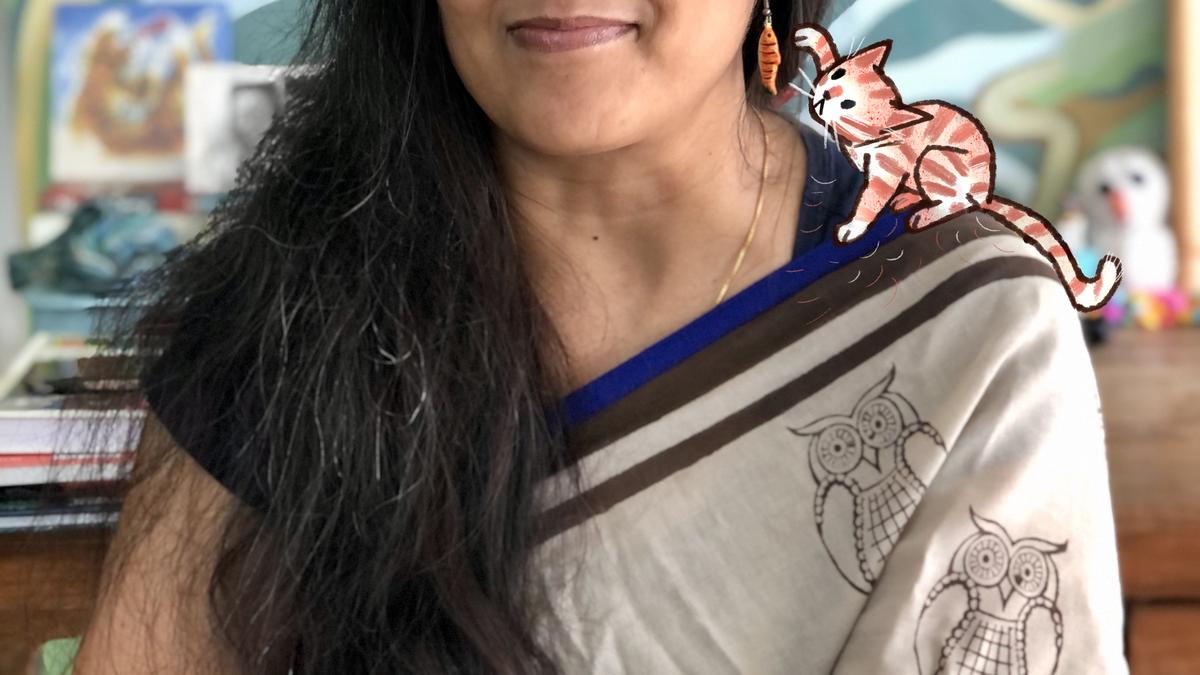
Turning pages, saving the planet: Bijal Vachharajani’s climate tales for young readers
The Hindu
Children's author Bijal Vachharajani uses humor and empathy to educate young readers about climate change and conservation through engaging stories.
For author Bijal Vachharajani, humour is more than just a storytelling device; it’s a way to instil hope and resilience in her readers. In an age where news updates on climate can often feel overwhelming, Bijal’s work provides an antidote by presenting a hopeful perspective. Her protagonists are young change-makers who face difficult circumstances but rise above them with courage and creativity.
As a children’s author and editor writing on environmental themes, she uses her voice to raise awareness about climate change, conservation, and the natural world. Her books, like A Cloud Called Bhura by Talking Club and Help! My Aai Wants to Eat Me! by Penguin Books, are a gentle yet powerful exploration of these topics, turning complex issues into accessible, entertaining narratives for young readers.
“Children see things in ways that we adults sometimes overlook,” she says. “They understand how wonderful and delicate our planet is. My goal is to give them the right information through the medium of stories without making them feel burdened by it.”
Empathy, in Bijal’s work, becomes a powerful tool for climate education. Rather than creating anxiety, her stories encourage compassion, hope, and resilience, showing young readers that small acts of care can create meaningful change. In Savi and the Memory Keeper published by Hachette India, Bijal weaves a beautiful tale of a young girl named Savi, who finds herself struggling with the loss of her beloved forest and the animals within it. This story of loss and healing gently guides children into thinking about the destruction that climate change can bring while allowing them to experience the profound emotions tied to such loss.
Her recent book When Fairyland Lost Its Magic also champions empathy as a crucial part of environmental action. Readers encounter fairies, giants, and animals who once thrived in magical lands but now face challenges due to pollution, deforestation, and climate change. By drawing these parallels, Bijal makes climate change personal and immediate for young readers, inviting them to see familiar tales in a new light.
Her latest project, Go Wild, promises to be an ambitious celebration of Nature in all its glory. This anthology edited by Bijal is a remarkable fusion of fiction, non-fiction, comics, photo essays, and poetry contributed by writers, illustrators, and photographers passionate about the environment. “Go Wild is an attempt to bring together some of the most planet-cooling writers and illustrators to re-wild the imaginations of children (and adults) especially in the face of environmental generational amnesia. Sohini Mitra of Puffin approached me to edit the anthology and championed this unique format of fiction, non-fiction, comics, photo essay and poetry, each story wonderfully introduced by a section opener illustrated by Prabha Mallya,” says Bijal. Each contribution reflects the theme of Nature and conservation, capturing the wonder of the natural world and inspiring readers to think critically about their relationship with it.
Bijal is currently working on a chapter book for Harper Collins which also deals with the climate crisis. “The story is of a family that’s waiting for the rain to arrive during a prolonged summer,” she says.











